There’s nothing like being at a Liberty Science Center Camp-In with 900 Cub Scouts and (some of) their parents.
One of the advantages to a museum sleepover is a behind the scenes look. You won’t get that here, but what you do get is presumably a smaller crowd than you’d get on a weekend. Of course if you’re there with almost 900 Cub Scouts, you’ll find that they all want to do the same things: race cars.
Even if you don’t want to read about the sleep-over portion – this post has a regular review in it too – keep reading.
The LSC does have a number of evening programs like you’d find during normal open hours – and like open hours, you can go to the programs or explore the museum on your own. While we were there, they offered two live science presentations (one on electricity and one on the four states of matter), and two lab programs (one on infections, and one on the Hudson Home lab).
The museum is too huge to tell all, so I’ll just pinpoint some of the highlights. You can’t see the whole museum in one trip.
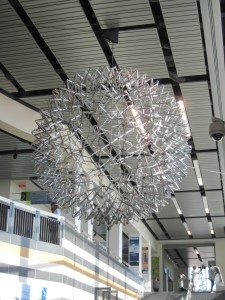
To the left off the lobby is the skyscraper exhibit, one of my favorites. The section focuses on how skyscrapers withstand opposing forces (like wind!) and how they’re built. While the wind tunnel was not open during the camp-in, we’ve done it before and it’s fun. You dress up in raincoats and sit in a booth, where you experience different forces of nature and learn how buildings are tested and built to withstand them. It takes about 30 minutes, so make sure you account for that if you’re short on time.
Another favorite is the chance to walk on an I-beam. You’ll get strapped in – no worries. If you get stuck or scared, an employee will come guide you back. You’ll need closed toe shoes.
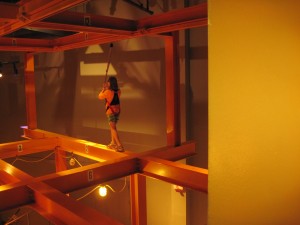
The Touch Tunnel is one of the kids’ favorites gamset, but for adults with bad knees, or those who don’t like crawling around the floor, this is one to avoid. It’s upstairs, and there’s sometimes a very long line. Basically, you crawl through a dark enclosure by feel (they take pictures of you, so be on good behavior). Having been to the San Francisco Exploratorium’s Tactile Dome, the Touch Tunnel is a bit disappointing. But my kids haven’t been there, so they don’t know any better.
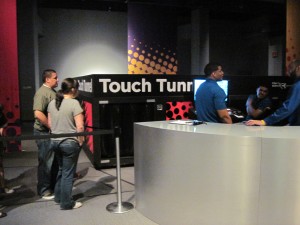
This mini rock climbing wall (wider than it is tall) is something my kids always want to do in the Wonder Why section (along with making big bubbles) when they go to LSC. No ropes to hold on to – you’ll see that you’re not far off the ground. There is an attendant there to help you.
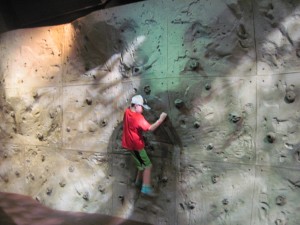
As you go up in floors in the museum, you’ll start noticing some great views of NYC (you can even see the Statue of Liberty, though not in this photo). The Liberty Science Center is part of Liberty Park, sharing a park with Lady Liberty’s NJ ferry station about a 5 minute drive away. The park is just across the water from Manhattan and has some great views.
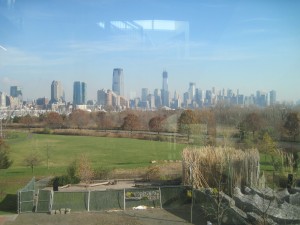
While really gross to think about, this worm exhibit in the Infection Connection area is fascinating. As kids push in an scope into this boy’s mouth (the boy on the right), it’s like they’re pushing it through live, and they watch on video as the scope passes through various organs, looking for the tapeworm.

Upstairs you’ll find exhibits on the Hudson River ecology (overall, it’s a little less exciting). They do have some animals in the Eat and be Eaten exhibit, like the alligator snapping turtle, stick insects (that truly look like sticks!), and very cute little frogs.
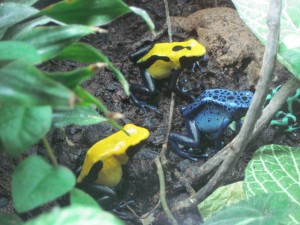
The exhibit on weather was telling. Having gone to LSC after Hurricane Sandy (like 2 weeks later) it was eerie to read exhibit signs that said “Much of the coastline around New York and New Jersey is only a few feet above sea level. These low-lying areas may flood when a super-massive storm hits. Building flood barriers will protect our coastal cities.” And this one: “Although a catastrophic storm is expected to hit our area only once every 100 years, climate change and sea level rise may make these deadly disasters more powerful and more frequent.”
The changing exhibits are worth a look. Right now they have an Avatar exhibit, and you can make your own avatar. My husband gave it the stamp of approval. After Hurricane Sandy, we saw the Animating exhibit by the Cartoon Network – quite fun.
I’m skipping over many, many exhibits, including great ones on communication (make a video speaking a few phrases in another language), race solar cars in the energy exhibit, practice doing your own surgery with a simulator, and more.
We missed out on the Arctic IMAX movie included with our overnight (we had someplace to go in the morning), but we did catch the Flight of the Butterflies IMAX in November. Outside the IMAX theater, you can see the actual equipment, which was fascinating.

The 3-D movie was on meerkats, and we learned a lot. Like you don’t want be the daughter getting knocked up in your family. Only the alpha-female is allowed to get pregnant and keep the babies. If the daughter gets pregnant, she’s banished from the group until her babies are born (they die – she can’t feed and protect them at the same time – without the family network helping her) and she’s welcomed back into the group with open arms. Though that sounds graphic, it was appropriate for kids. It’s a National Geographic movie.
CAMP-IN LOGISTICS
When you arrive (registration is 6-7 p.m.), you’ll likely find very long lines, with airport-type security (you’ll be wanded, and your bags searched). You’ll be given a wristband, which coordinates with your schedule. Your wristband color determines what time you have snack (in our case, pudding, granola bars and goldfish crackers), see the 3-D movie, eat breakfast in the morning, and see the IMAX movie. Each group is assigned a place to store their things, and a place to sleep at night.
If you’re the coordinator for your group, you’ll need to attend a liaison meeting (ours was at 8 p.m.) for about 20 minutes. You’ll also be paged any time a family in your group wants to leave prior to bed time. While this is a complete hassle for the liaison, it does help ensure that kids don’t go home with the wrong adult (insert sinister meaning here).
Adults can bring an inflatable mattress (battery powered only – we use a Coleman pump like this), and kids are allowed a thin pad like a yoga mat or Therm-a-rest. You blow those up by mouth. You’re not allowed to change clothes there, so wear something you’ll be comfortable sleeping in (we told our son to wear shorts under his pants, so he could slip his pants off and have something decent underneath – same with a t-shirt). Their suggestion of bringing an eye cover for sleeping is a good one – there will be still be some lights on all night.
Schedule:
DAY 1
6-7 – arrival/registration
7-11 – exhibits (though in that time period, you’ll have snack, watch your 3-D movie and go to any evening programs you want)
11 -begin setting up camp for the night.
11:30 – lights dim
midnight – yawn! Quiet time, until…
DAY 2
6:30 – rise and shine and put your stuff in the car
7-9 – 3rd floor exhibits only (plus the store) are open -other floors are being cleaned. Staggered breakfasts.
9 – museum opens to the public
8:15-11 – IMAX movies depending on your wristband color
You can stay all day if you want.
IF YOU GO:
Who: They welcome those in 1st-8th grade, and there must be one adult per five kids. They offer boy-only, girl-only or co-ed nights, though the adult chaperone can be either gender no matter what night. Groups must be 20 or more.
Cost: $55/person, which includes admission (you can stay the next day too), evening snack, morning continental breakfast, 3-D movie, IMAX movie and all programming.
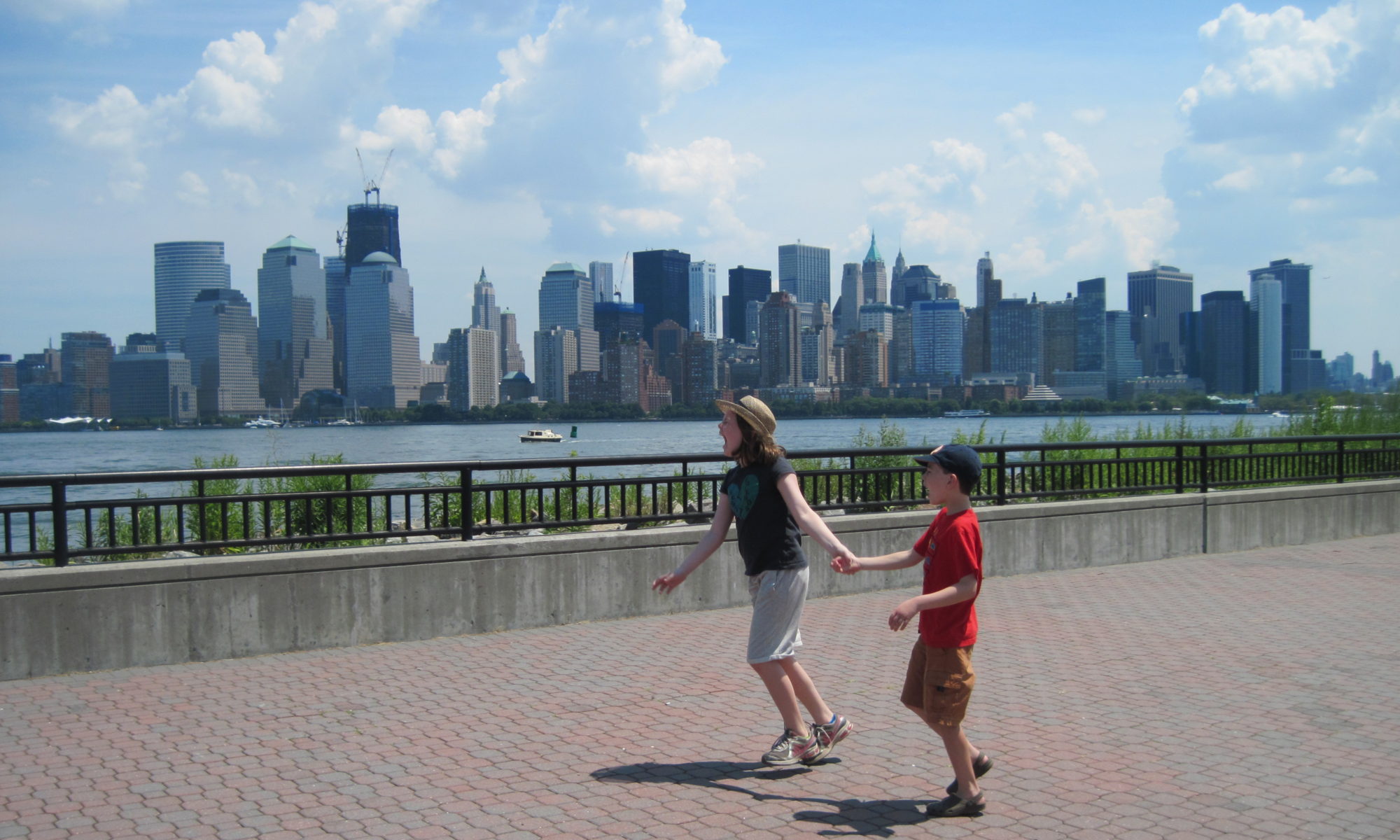
One Reply to “Review: Sleepover at the Liberty Science Center”
Comments are closed.